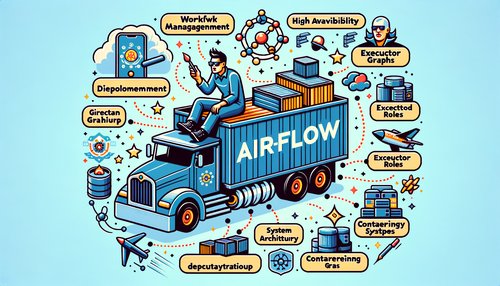Uncharted Territory: Your Ultimate Introduction to Terraforming the Cloud
Welcome to the era of transformation, where cloud computing has become an integral part of modern technology. As organizations strive for agility and scalability, the need to manage infrastructure as code becomes imperative. Enter Terraform – an open-source tool that unlocks the power to automate your cloud infrastructure. In this blog post, we explore the exciting journey of mastering Terraform and how it can revolutionize your approach to managing cloud environments.
Understanding Terraform and Infrastructure as Code (IaC)
Infrastructure as Code (IaC) refers to the process of managing and provisioning computing infrastructure through machine-readable configuration files, rather than physical hardware management or interactive configuration tools. Terraform, developed by HashiCorp, is a leading IaC tool that enables you to define and provision data centers using a declarative configuration language.
By using Terraform, you can create an execution plan and apply it to build infrastructure across various cloud providers such as AWS, Azure, and Google Cloud Platform. The tool handles "resource graphing" to optimize the parallelization of tasks, resulting in efficient deployment and management.
Getting Started: Setting Up Your Terraform Environment
To embark on your Terraform journey, begin by installing Terraform on your local machine. Visit the official Terraform website to download and install the appropriate version for your operating system.
- Install Terraform using a package manager like Homebrew on macOS:
brew install terraform - Create a directory for your Terraform configurations:
mkdir terraform-project - Within this directory, write your first
.tffile, which describes your desired infrastructure.
Once Terraform is installed, use terraform init to initialize the directory, which downloads necessary plugins for your chosen providers.
Defining Infrastructure with Terraform
Terraform's configuration files are written in HashiCorp Configuration Language (HCL), a concise and human-readable format. Here is a simple example of a configuration file to provision an AWS EC2 instance:
provider "aws" {
region = "us-west-2"
}
resource "aws_instance" "example" {
ami = "ami-12345678"
instance_type = "t2.micro"
}
In this example, the provider block specifies the AWS region, and the resource block details the attributes of the EC2 instance to be created.
Using Modules to Simplify Configurations
Terraform modules enable you to decompose your infrastructure into smaller, reusable components. This helps streamline complex configurations by grouping related resources. For instance, if you frequently deploy a similar application stack, creating a module can save time and minimize errors.
A module is simply a container for multiple resources that are used together. A common pattern is to create a module for a virtual network, which can include subnets, routing tables, and network security groups.
Managing State and Collaboration
Terraform uses a state file to keep track of your infrastructure’s current state. This state allows Terraform to determine what changes need to be applied to achieve the desired state described in your configurations.
To collaborate on Terraform projects, consider using a remote backend like Terraform Cloud or AWS S3. Remote backends allow multiple team members to work on the same infrastructure, synchronize state, and prevent conflicts.
Practical Tips and Best Practices
- Modularize your code: Break down complex configurations into smaller, more manageable modules for reusability and clarity.
- Use version control: Store your Terraform configurations in a version control system like Git for effective collaboration and change tracking.
- Secure your secrets: Avoid hardcoding sensitive information in your configurations. Use tools like AWS Secrets Manager or HashiCorp Vault.
- Regular testing: Test your configurations in a sandbox environment before deploying to production to ensure stability and reliability.
Conclusion: Embark on Your Terraform Journey
Terraform empowers organizations to automate, scale, and streamline their infrastructure management processes, enabling them to explore uncharted territories in the cloud with confidence. By adopting Terraform and incorporating best practices, you can unlock the full potential of cloud infrastructure as code.
Embark on your Terraform journey today and transform how you manage cloud environments. As the landscape of technology continues to evolve, leveraging tools like Terraform will be crucial in staying ahead of the curve. Start building your cloud infrastructure with precision and efficiency – the possibilities are limitless!
Recent Posts

Unlocking the Power of Terraform: Mastering Conditional Expressions for Smarter Infrastructure Automation

Unveiling the Future: Navigating the Public Interface of Apache Airflow for Streamlined Workflow Management
Apache Airflow
Mastering Workflow Automation: Unconventional Apache Airflow How-To Guides for the Modern Data Enthusiast
Apache Airflow
Mastering the Cloud: Unveiling AWS CloudFormation Best Practices for Seamless Infrastructure Management

